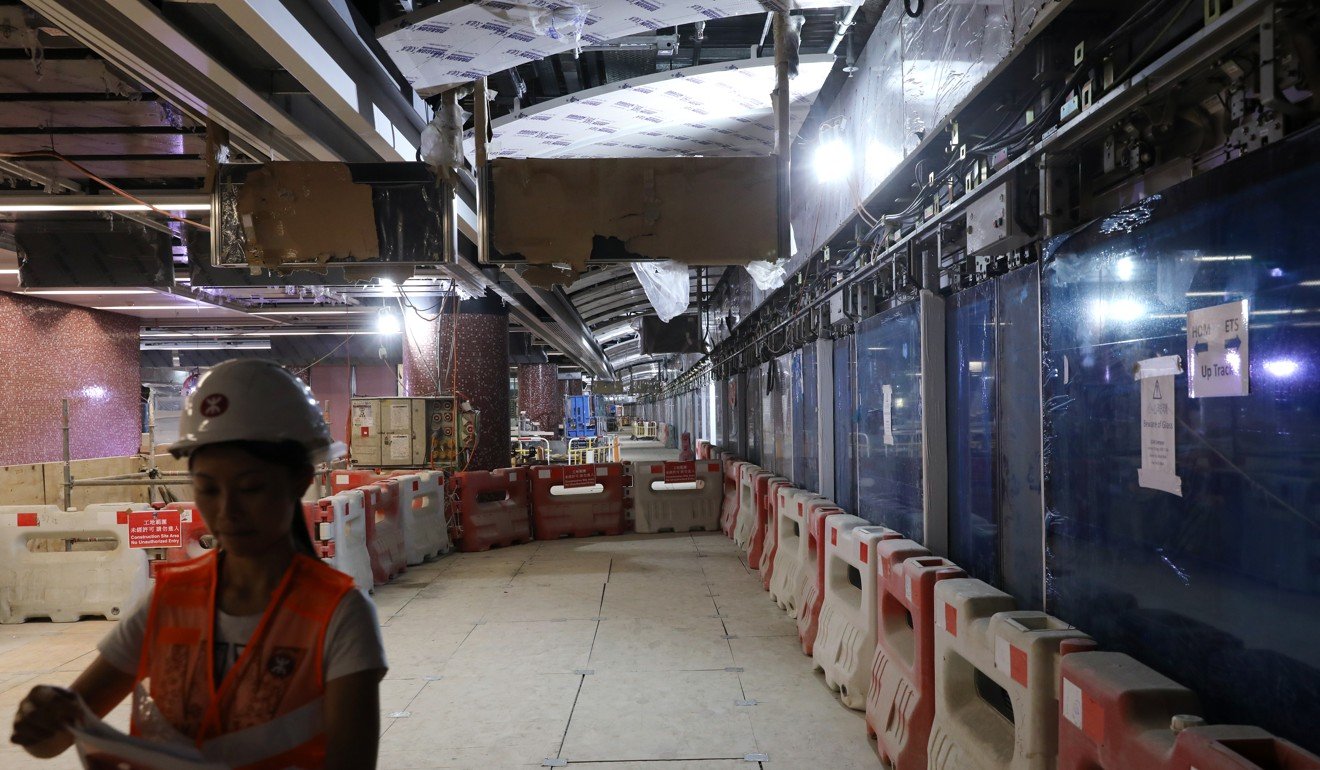
Hong Kong’s Hung Hom station is safe and building must go on, award-winning engineer Mike Glover tells inquiry into scandal
- ‘Every day you are denying society an asset that it can use. Why?’ Arup fellow says
An award-winning engineering expert has called on Hong Kong authorities to allow the expansion of Hung Hom station to continue despite a construction scandal, telling an inquiry that the building is safe.
Dr Mike Glover, an Arup fellow, laid out his assessment on Thursday at the commission of inquiry into shoddy building work that has plagued the HK$97.1 billion (US$12.4 billion) Sha Tin-Central Link, Hong Kong’s most costly rail project to date.
Leighton Contractors (Asia), the main engineering firm on the job, is embroiled in allegations that reinforcement bars were cut short to fake proper installation into couplers on platforms, and that supporting diaphragm walls were changed without authorisation.
The city’s railway operator, the MTR Corporation, is in the process of breaking open at least 80 sections of the two new platforms to check structural safety. At least 168 bars will be dug up for inspection, with a final assessment expected by March.

Appointed by the MTR Corp to offer an independent opinion, Glover said Hung Hom station was structurally safe and strong.
“I would like to make it clear that, in my opinion, the structure is safe,” he said. There was no evidence to suggest any distress to the building, he added.
Hung Hom station remains safe despite defective platform steel bars, engineering expert says
Glover has handled a number of high-profile construction projects around the world, including HSBC’s headquarters in Hong Kong and a high-speed rail line in Britain.
“Construction of the station should be allowed to continue because, when you think about it, every day you are denying society an asset that it can use. Why?” he said. “There is no reason from a technical point of view.”
He disclosed that the rail operator would later conduct further tests on nine samples from the station covering cyclic loading and bar elongation, to add weight to its assertion that the structure was safe.

He argued that opening up 80 spots on the platforms as planned was more than enough to get a clear picture of the building work there, warning that more digging would weaken the structure.
However, Glover admitted there had been issues with bad workmanship, especially in cases where steel bars had been embedded into couplers by as little as 6mm.
“There are undoubtedly issues of workmanship with the coupler connections, and they have got to be addressed and put to bed,” he said.
“But it’s not an issue of work being malicious … I don’t want those issues to cloud this as one of safety.”

